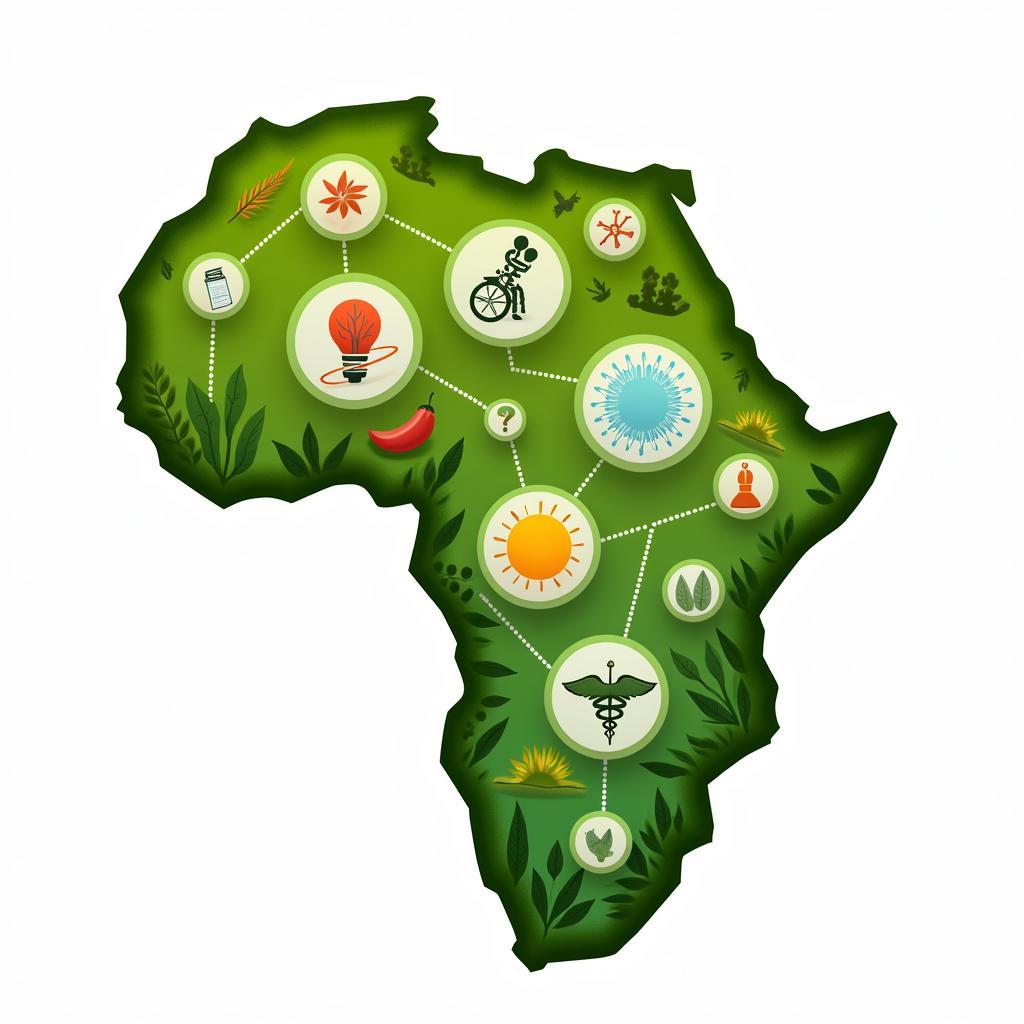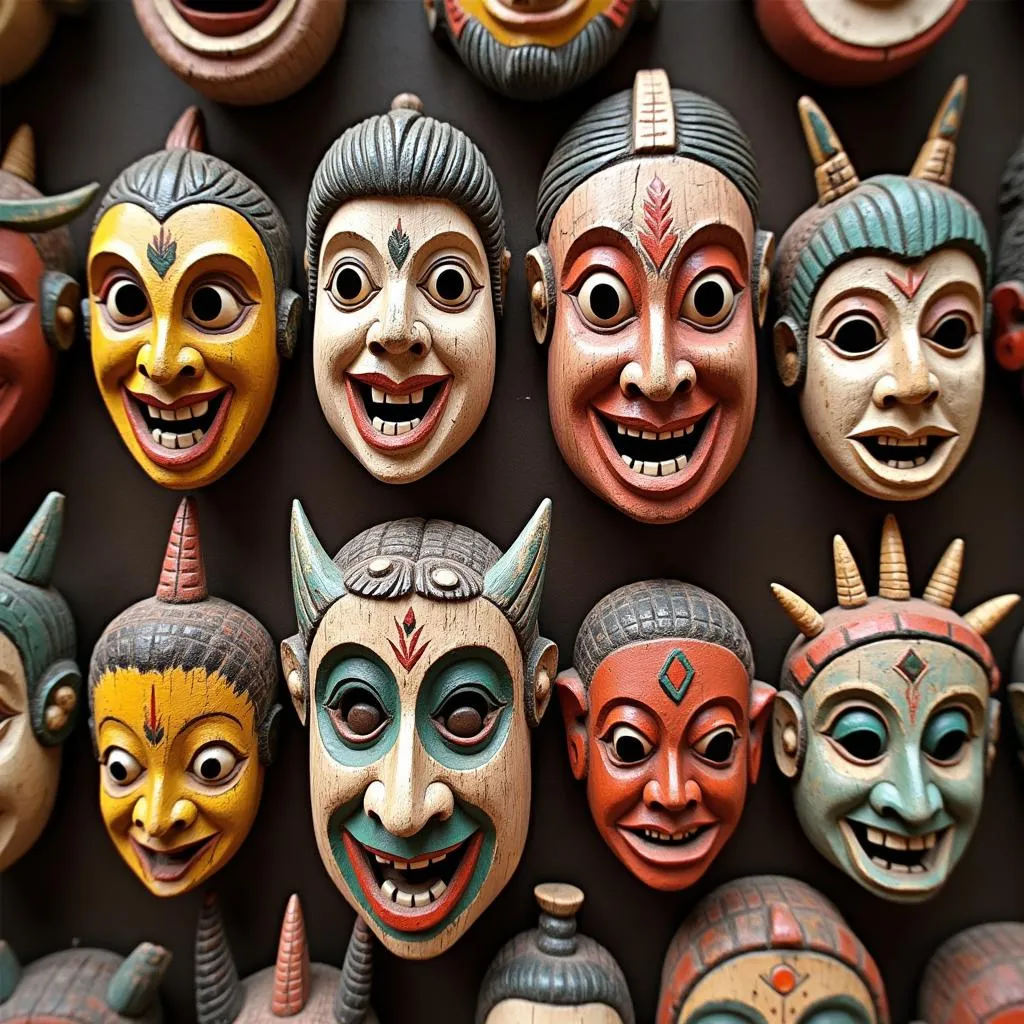Exploring the Wild Beauty of African Drawings of Animals
African Drawings Of Animals offer a captivating glimpse into the rich cultural heritage and diverse wildlife of the continent. These artistic representations go beyond mere depictions of animals; they embody symbolic meanings, spiritual beliefs, and the intricate relationship between humans and nature in African societies. From ancient rock paintings to contemporary art forms, exploring these drawings unveils a fascinating world of artistic expression and cultural significance. You can find some examples of easy african drawings online for inspiration.
The Significance of Animals in African Culture
Animals hold a prominent place in African mythology, folklore, and spiritual practices. They are often seen as totems, ancestors, or messengers of the divine. Different animals are associated with specific qualities and symbolism, such as the lion representing strength and royalty, the elephant symbolizing wisdom and longevity, and the leopard embodying stealth and cunning. These symbolic associations are reflected in African drawings of animals, imbuing them with deeper meaning and cultural significance.
The depiction of animals in African art also reflects the close connection between humans and nature. Traditional African societies have a deep respect for the natural world, recognizing the interdependence of all living things. This reverence for nature is evident in the detailed and expressive portrayal of animals in their art forms.
A Journey Through Time: Historical Context of African Animal Drawings
The tradition of depicting animals in African art dates back millennia, with some of the earliest examples found in ancient rock paintings across the continent. These rock art sites, such as the Tassili n’Ajjer in Algeria and the Brandberg Mountain in Namibia, offer a glimpse into the lives and beliefs of prehistoric African communities. The drawings often depict scenes of hunting, herding, and ritual ceremonies, showcasing the central role of animals in their daily lives and spiritual practices.
Over time, different artistic styles and techniques emerged across various regions of Africa. From the intricate wood carvings of West Africa to the vibrant beadwork of Southern Africa, each region developed its unique artistic language for representing animals. These artistic traditions were often passed down through generations, preserving cultural knowledge and artistic skills.
Diverse Styles and Techniques in African Animal Drawings
African drawings of animals encompass a wide range of artistic styles and techniques. Some drawings emphasize realism, capturing the anatomical details and physical characteristics of the animals with precision. Others employ stylized forms and abstract patterns, prioritizing symbolic representation and emotional expression. The choice of materials and techniques also varies, including drawing with charcoal, pigments, ink, and carving or sculpting in wood, stone, or clay. Exploring different african art styles can provide a deeper understanding of this artistic diversity.
In some cultures, masks representing animal spirits are used in ritual ceremonies and performances. These masks often feature exaggerated features and vibrant colors, adding a dramatic and symbolic dimension to the portrayal of animals. If you’re interested in learning more, you might enjoy looking at examples of african animal mask drawing.
Dr. Adebayo Sango, a renowned art historian specializing in African art, notes, “African drawings of animals are not simply decorative objects; they are powerful expressions of cultural identity, spiritual beliefs, and the profound connection between humans and the natural world.”
Contemporary Interpretations and the Future of African Animal Drawings
Today, African artists continue to draw inspiration from the rich tradition of animal depictions. Contemporary artists are exploring new mediums and techniques, while also incorporating traditional motifs and symbolism into their work. This fusion of old and new creates a dynamic and evolving landscape of African animal art. If you’re looking to create your own artwork, you might find some helpful resources for african animal drawing templates.
Professor Fatima Mohamud, a leading scholar of contemporary African art, observes, “Contemporary African artists are pushing the boundaries of traditional art forms, using their work to address social and environmental issues, while also celebrating the beauty and diversity of African wildlife.”
Conclusion
African drawings of animals offer a powerful lens through which to understand the continent’s rich cultural heritage and its deep connection with nature. These artistic representations go beyond mere depictions of wildlife; they embody symbolic meanings, spiritual beliefs, and the intricate relationship between humans and the environment. By exploring these captivating drawings, we gain a deeper appreciation for the artistic genius and cultural significance of African art. You might find some helpful african animal flash cards to help you learn more about different species.
FAQ
-
What is the significance of animals in African art?
Animals are often symbols of spiritual beliefs, totems, or ancestors. -
What are some common animals depicted in African drawings?
Lions, elephants, leopards, and birds are frequently represented. -
What materials are used in African animal drawings?
Charcoal, pigments, ink, wood, stone, and clay are common materials. -
Where can I see examples of ancient African animal drawings?
Rock art sites like Tassili n’Ajjer and Brandberg Mountain contain ancient examples. -
How are contemporary artists interpreting African animal drawings?
They explore new mediums while incorporating traditional motifs and addressing contemporary issues.
Scenarios of Common Questions
-
Scenario: A student is researching African art and wants to know the symbolism behind animal depictions.
-
Question: What do different animals symbolize in African art and culture?
-
Scenario: An artist wants inspiration for incorporating African animal motifs into their work.
-
Question: Where can I find examples of different styles and techniques used in African animal drawings?
Further Exploration
Explore our website for more articles on related topics, such as:
- The History of African Art
- Contemporary African Artists
- The Role of Animals in African Mythology
Call to Action
For any assistance or further information, please contact us:
Phone: +255768904061
Email: kaka.mag@gmail.com
Address: Mbarali DC Mawindi, Kangaga, Tanzania
Our customer support team is available 24/7.

